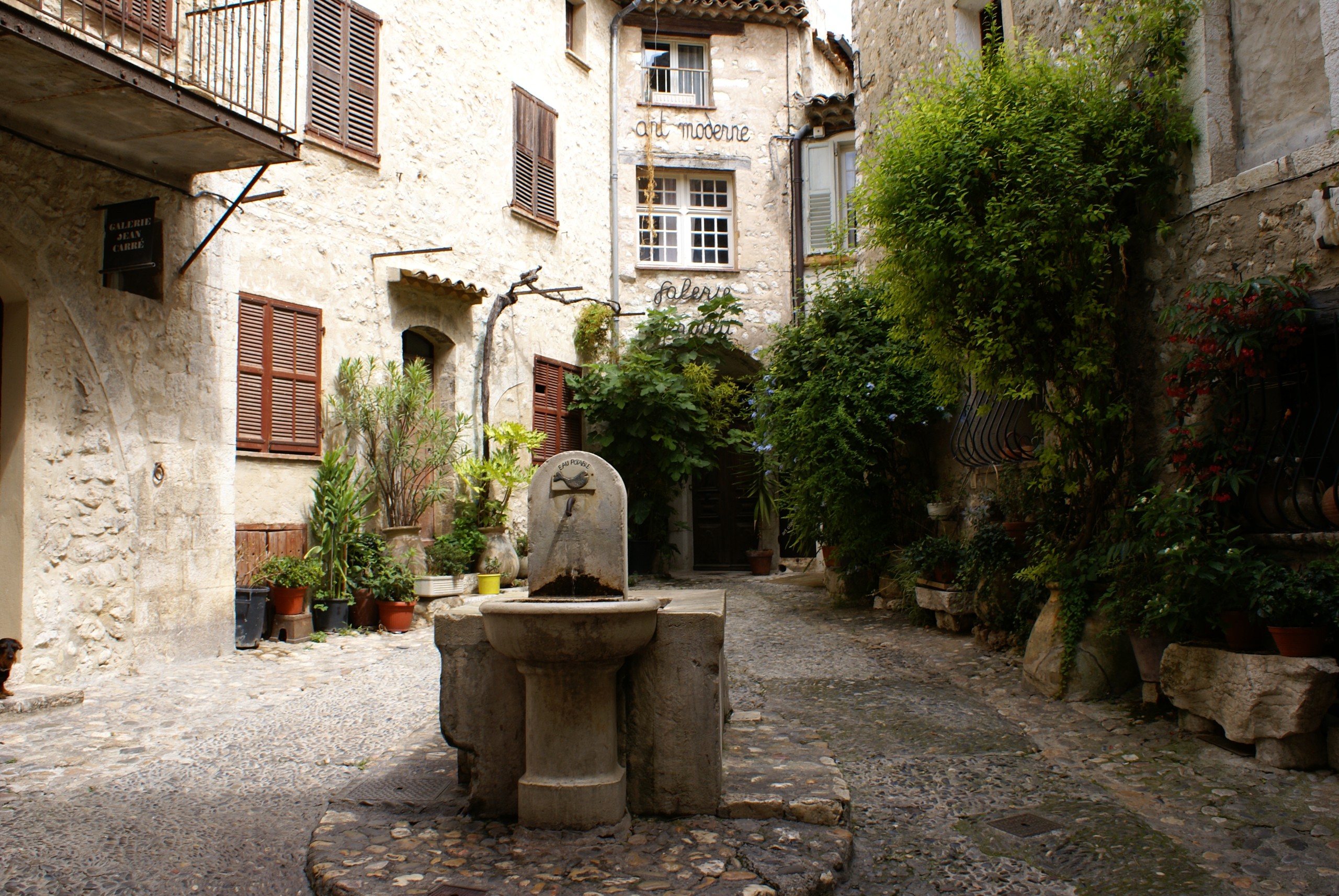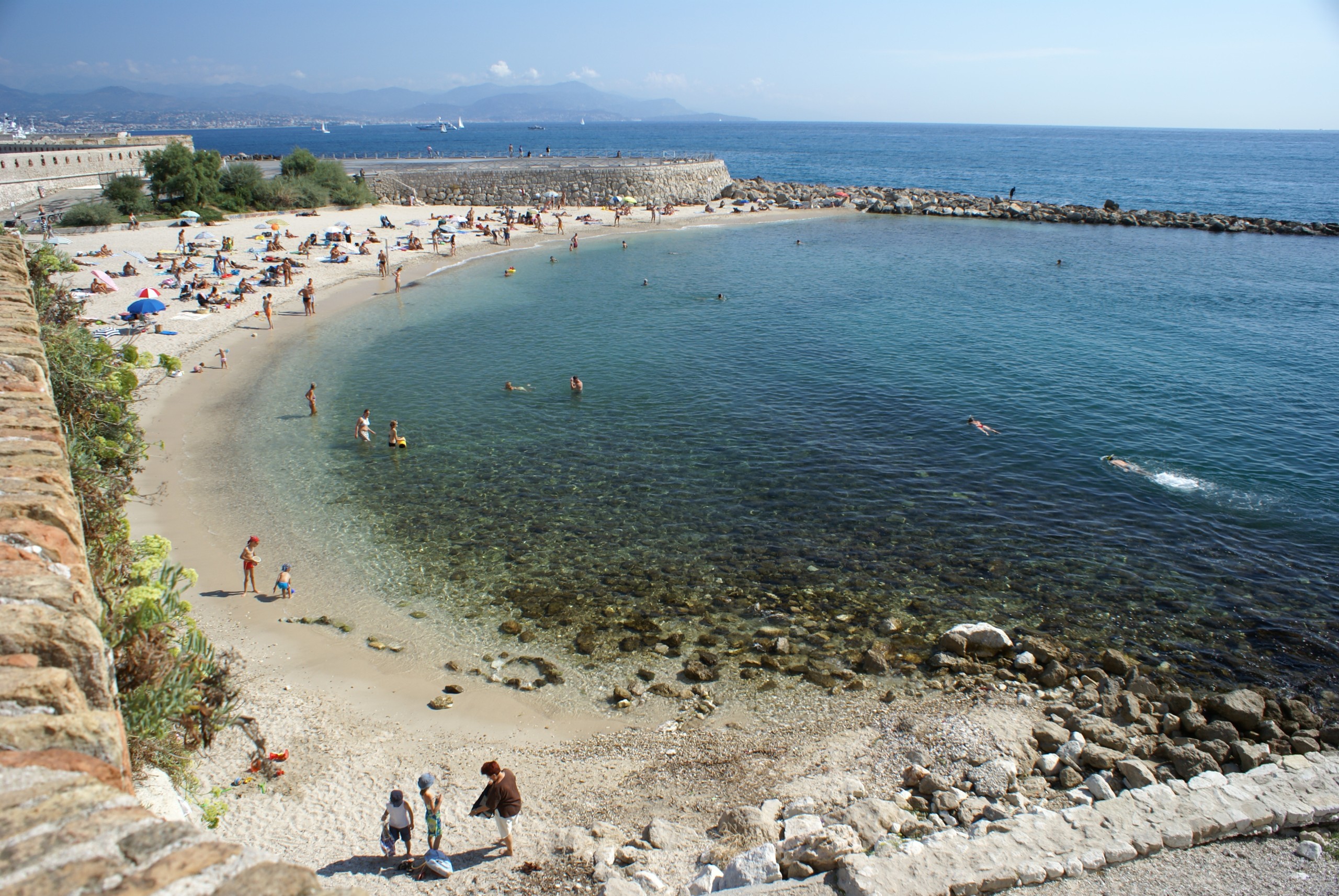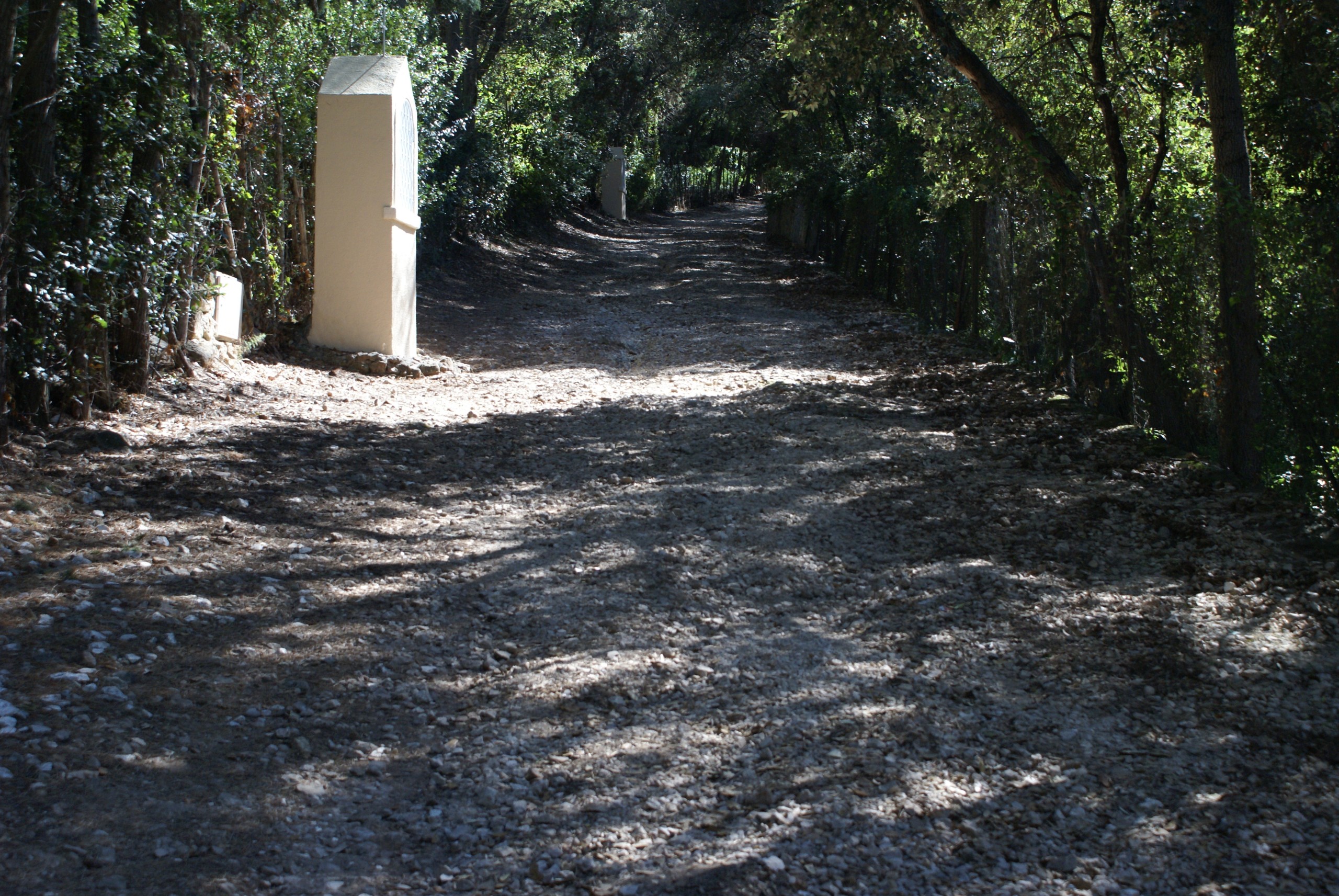It can be easy to forget in these well connected days that southern France was little visited prior to the days of the railway. Although crossed by trade routes which functioned from the time of the ancient Greeks, few people would make the effort to travel unless driven by mercantile greed. Smollett, the 18C Scottish doctor and not the modern American celeb, made the effort and his Travels through France and Italy (1766) gives a good idea of how hard it was to get to the South coast by land and what life was like once one got there. For example, the now popular summer resort of the Gorges de Verdon, now about 3 hours drive from Nice, were only known to Paris when Louis XVI's cartographers reached there in the 1780's.
What society existed deep inland and away from the navigable rivers was often perched defensively on hill tops, hence the description of these retreats as Village Perchées. Here the residents could retreat from the advances of North African raiders against which Nice still rowed out to combat with prisoner-powered galleys in the days of Smollett, and who were not completely brought under control until a resurgent French military took control of Algiers in the 1830's.
Hence the fortifications of larger places, such as Antibes were not atypical. The Grimaldi castle of Antibes is repeated in Monaco, St Paul de Vence, and Cagnes (below, see Cagnes;, the latter worth a visit to get a feel for how self sufficient these remote settlements had to make themselves. The castle also contains a good museum on the local olive industry although not explaining why, when so much is made locally, the green fluid costs so much in the local shops relative to those of Italy which are so near.

The south east of France has been a prime drawcard for both the French and foreigners for a century and a half. Initially the winter climate was sufficient to draw Northern Europeans from their smog filled, dank, industrial cities and Queen Victoria was an early adopter who took advantage of the trains service established between Paris and Nice. From the 1920s, the summer beaches began to draw people to the warm sea and the relaxed lifestyle with Coco Chanel (Chanel's Riviera by Anne de Courcy) blessing the suntan following a cruise on her then boyfriend's, the Duke of Westminster's, yacht ("yacht" is a word used in the south of France for anything from some bit of fibreglass which can accommodate two up to small ocean liners). More generally along the coast from Marseilles to Nice, the nineteenth century artists began to discover the clear light, so different to that which they experienced along the Northern European coast near to their Paris orientated customers. Unsurprisingly, any description of the area around Antibes will inevitably be peppered with references to artists.
For a more fullsome read about early 20C French based artists by someone who was there, knew them, and bought the works, I'd recommend Peggy Guggenheim's Out Of This Century, Confessions Of An Art Addict which provides insight not only into the artists' lives but also the gilded rich who supported them, and into the horror which was the Nazi invasion.
A Note on Travelling Around Antibes
The local rail service travels along the coast to beyond the Itlaian border in the East, and to Frejus in the west but then turns inland towards Marseille. This serves well for visiting Cannes, Juan Les Pins, Antibes, Biot, Cagnes, Nice, Villefranche, Monaco, and Menton. Marseille can be reached directly by train although perhaps for an overnight stay. A car is the best for travelling inland although buses will get you to many places but slowly and not often. Many visitors to the Côte d'Azur want to get to St Tropez but this requires either a car, and a lot of patience in summer, or the boat service from Juan Les Pins which runs in summer: best to use the internet to search for current times and cost. The road, the D559 from Frejus along the coast or the D25 down from the A8, can be very busy in summer: we gave up at Sainte-Maxime the last time we tried it.
In no particular order, these are some of the local sights we recommend and know.
Vence and St Paul de Vence
St Paul is a Village Perchée located to the North Eest of Antibes, best reached by car and is about a one hour drive. Worth a visit in itself and just south of Vence which is known as the site of Matisse's Chapelle de Rosaire. See Saint-Paul de Vence
St Paul meets everyone's expectations of the Côte d'Azur: medieval fortifications; artist colony; top class restaurant in the Colombe d'Or where artists really did settle their bills with paintings; cafes and bars and cheaper restaurants; boules being played at the village entrance; and views across to the azure sea. BUT you would need to book weeks in advance for the Colombe d'Or and prices to eat and stay in the village generally are high. It has the advantage of an underground car park which in our experience usually has spaces available. The village has hotels although we find a day trip sufficient: it is a small place.
A note on French car parks: they tend to be tight fitting. Learn to live with scuffed bumpers (fenders for you USA folf).

Fondation Maeght
The Fondation is about twenty minutes walk from the village. It is a modern art collection based around the collection of art dealers Marguerite and Aimé Maeght. It includes works by many of the artists of the first half of the nineteenth centurey including Joan Miró, Marc Chagall, Alberto Giacometti, Georges Braque, Alexander Calder and Fernand. Built in the 1960's, the building is a fine example of the modern French concrete style.

The delight of the local climate is that many of the artworks can be displayed outside.

Nice
Nice is a big enough city to be whatever you want. The old city sits to the east of a long built over river. A city more recognisable as 19C sits tothe west. The old city climbs up Mont Boron with the Port at its sea base. The new city stretches back form the beach into the foothills.
Gravette

The water in the Gravette harbour is often clear as can be seen in this picture, but it can be cloudy after periods of strong wind, and also becomes less clear when very busy as the natural silt is stirred up. The water's cleanliness is evidenced by many small fish. There are two freshwater showers on the beach which is supervised by lifeguards during the summer season. A bar which serves food is located on the raised area behind the beach. There are lockers located next to the lifeguard's hut which take a 1 euro coin each time one is used.
The water deepens quickly as one swims towards the opening to the sea. The beach sand is sifted each morning in summer. Small jellyfish (medusa in French) tend to appear in late August/early September when the wind shifts to onshore. The lifeguards post a chalked up sign when this happens with the density of jellyfish indicated by showing one to three of them on the board.
Ponteil and Salis

As the picture shows, the two beaches are long, and sandy, and they gradually slope but can be a little seaweedy and are popular with families with small children and in the late afternoon with volley ball players. They are connected by a small promontory which has been recently redeveloped and includes the local sailing school and a handicap beach which has hard paths for wheel chairs, and young staff to help the disabled enjoy the sea. There is a business between the Ponteil beach and the town which will tow you out on various forms of rubber inflatable. One of its boats is speeding out from its quay in the picture, and where there is also a memorial to the covert landing of British submariners during the war to support the local Resistance. There is also the Royal Beach Club at this end where you can hire a recliner and umbrella: bar, restaurant, and toilet services available.
Eglise Notre-Dame de la Garoupe and Light House

Antibes sits at the North East end of Cap d'Antibes, a promontory which contains the high class Hotel du Cap-Eden Roc, the Eilenroc Gardens and house, the landing place of Napoleon when he escaped Elba and began the march ultimately to Waterloo, the Garoupe beach area where Gerald and Sara Murphy and their Golden Era USA money created the taste for summer holidays enjoyed by F Scott Fitzgerald and the inter-war art colony. Previouly Juan les Pins and Antibes, sitting either side of top end of the Cap had been the playground of British and Russian aristocrats and old world USA millionaires, popular in winter because of their mild climate and that clean air which had drawn the artists of the 19C from Paris.

The church sits atop the Cap with the modern lighthouse over which you will probably pass if flying into Nice airport. It is from here that the picure on the Home page was taken. A pleasant walk on a hot day is up the Chemin de Calvaire which climbs from the Salis beach area through the shady trees many of which are olives and the food store of squirrels which can eat the raw, young, tart olives. In june local fishermen repeat a thousand plus year old tradition and carry a statue of the Virgin Mary from the old town, up the Chemin de Calvaire to the church. There is a cafe in the church buildings.
Shops
Opening hours: most shops in the old town and nearby open on Sundays but don't expect this for shops in the new town further inland. Shops deliberately appealing to tourists, such as restaurants, may still have a closing day each week. Many of the bars also serve food. Other shops, such as pharmacies and food retailers will close one day per week, if not two. This is nowadays largely down to France's Code de Travail which enforces the 35 hour week: it simply is not economic for small businesses to try and staff up for 7/7 opening. Also, many retailers will close between 13:00 and 16:00. The upside is they are open until 19:00 so you can get ingredients for the family's dinner after leaving the beach. Bars open early, 07:00 is not unknown, as cafes for breakfast. Bars and restaurants will stay open into the early hours of the morning in summer but cut back to about 20:00 to 22:00 outside of the high season.
The town has a wide range of food shops including several supermarkets the nearest of which is a Carrefour in the Place Nationale. As you would expect, there are several boulangeries and they also take it in turn to close. There are also boucheries and wet fish shops but the latter are expensive. If you have a car or fancy the bus, we would go up the large Carrefour hypermarket near the motorway junction for both fresh food and if stocking up on groceries for one or two weeks.